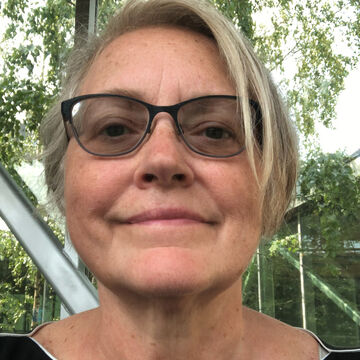| Sculptural Headwear |
Fashion Design |
2013 (001) |
Fall 2024 |
|
Description
The human head as a moving and turning pedestal presents continually changing views of sculptural headwear and millinery. Students reconsider the relationship of hat to head, and the potential of traditional and alternative materials. Straw sculpting, block carving, felt blocking, and couture sewing are used in exploration of 'the hat' as a sculptural form.
|
Class Number
1511
Credits
3
|
| Form in Fabric |
Fashion Design |
2014 (001) |
Fall 2024 |
|
Description
Giving woven fabrics and alternative flat materials three-dimensional form is key to many sculptural disciplines, most notably headwear design, and garment and fiber works. Beginning with headwear projects as a prime example of self-supported sculptural form, students proceed through a study of methodologies such as pattern drafting, blocking, draping, and carved-form patterning to develop headwear or other objects suiting their individual practice. Assembly is achieved through hand stitching, machine sewing, or innovative techniques appropriate to specific materials. Visual imagery and texts assist in the development of concepts, and the study of interior and exterior space.
|
Class Number
1517
Credits
3
|
| 3D Embellishment |
Fashion Design |
2015 (001) |
Spring 2024 |
|
Description
Designed to encourage 3-dimensional surface experimentation, this course begins with traditional embellishment methodologies primarily originating in couture millinery, as a means of altering or breaking away surfaces and dimensions. Students then explore alternative materials and methods to transform, mutate or redefine garments, accessories, etc., or to create textured objects in their entirety. To provide related information of interest, selected texts concerning the sociological theories of craftsmanship may be included as well as works by authors like Thor Hanson, Laura Jacobs, Candace Kling, Howard Risatti and Erica Wilson. Field trips to local venues, videos such as the Craft in America series, plus the investigation of works by artists like Nick Cave, Tara Donovan, the Haas Brothers, and Kate MccGwire optionally augment the course content. Projects may be based on up-cycled objects and materials, and will entail various techniques including ribbon manipulation, feather work, flower tooling, and embroidery. Fur/faux sewing and leather tooling are introduced, and other `thread arts? (macrame, tatting, etc.) may be individually investigated in support of conceptual and formal design.
|
Class Number
1171
Credits
3
|
| 3D Embellishment |
Fashion Design |
2015 (001) |
Fall 2024 |
|
Description
Designed to encourage 3-dimensional surface experimentation, this course begins with traditional embellishment methodologies primarily originating in couture millinery, as a means of altering or breaking away surfaces and dimensions. Students then explore alternative materials and methods to transform, mutate or redefine garments, accessories, etc., or to create textured objects in their entirety. To provide related information of interest, selected texts concerning the sociological theories of craftsmanship may be included as well as works by authors like Thor Hanson, Laura Jacobs, Candace Kling, Howard Risatti and Erica Wilson. Field trips to local venues, videos such as the Craft in America series, plus the investigation of works by artists like Nick Cave, Tara Donovan, the Haas Brothers, and Kate MccGwire optionally augment the course content. Projects may be based on up-cycled objects and materials, and will entail various techniques including ribbon manipulation, feather work, flower tooling, and embroidery. Fur/faux sewing and leather tooling are introduced, and other `thread arts? (macrame, tatting, etc.) may be individually investigated in support of conceptual and formal design.
|
Class Number
1508
Credits
3
|
| Head Space:Advanced Millinery |
Fashion Design |
3027 (001) |
Spring 2024 |
|
Description
Hats are conceptually powerful and visually important in both fashion design and performance. In this advanced course, headwear methodologies are explored through the challenges of wearable volume, relation of designed object to head, and couture-level workmanship, while underlying concept, innovative design, and technical dexterity are simultaneously stressed. A series of traditional hat-making techniques, e.g., wire-framing, blocking and draping, are explored and then expanded upon through alternative methods and materials to create wearable forms. Questions regarding the function and relevance of fashion and headwear, and their potential for interdisciplinary contextualization help drive students’ design development. Select texts by authors such as Ann Albrizio, Susan Heiner, Stephen Jones, Simon Kelly, and Howard Risatti, may be included for further information. Works by historical and contemporary milliners like Solange de Fabry, Stephen Jones, Philip Treacy, and Madame Paulette provide context and inspiration, along with films and videos that highlight or explore headwear. Students with an interest in object design, sculptural practices or other making processes and disciplines are also welcomed with permission from the instructor. The semester culminates in SAIC’s annual Headwear Awards judging.
|
Class Number
1175
Credits
3
|

